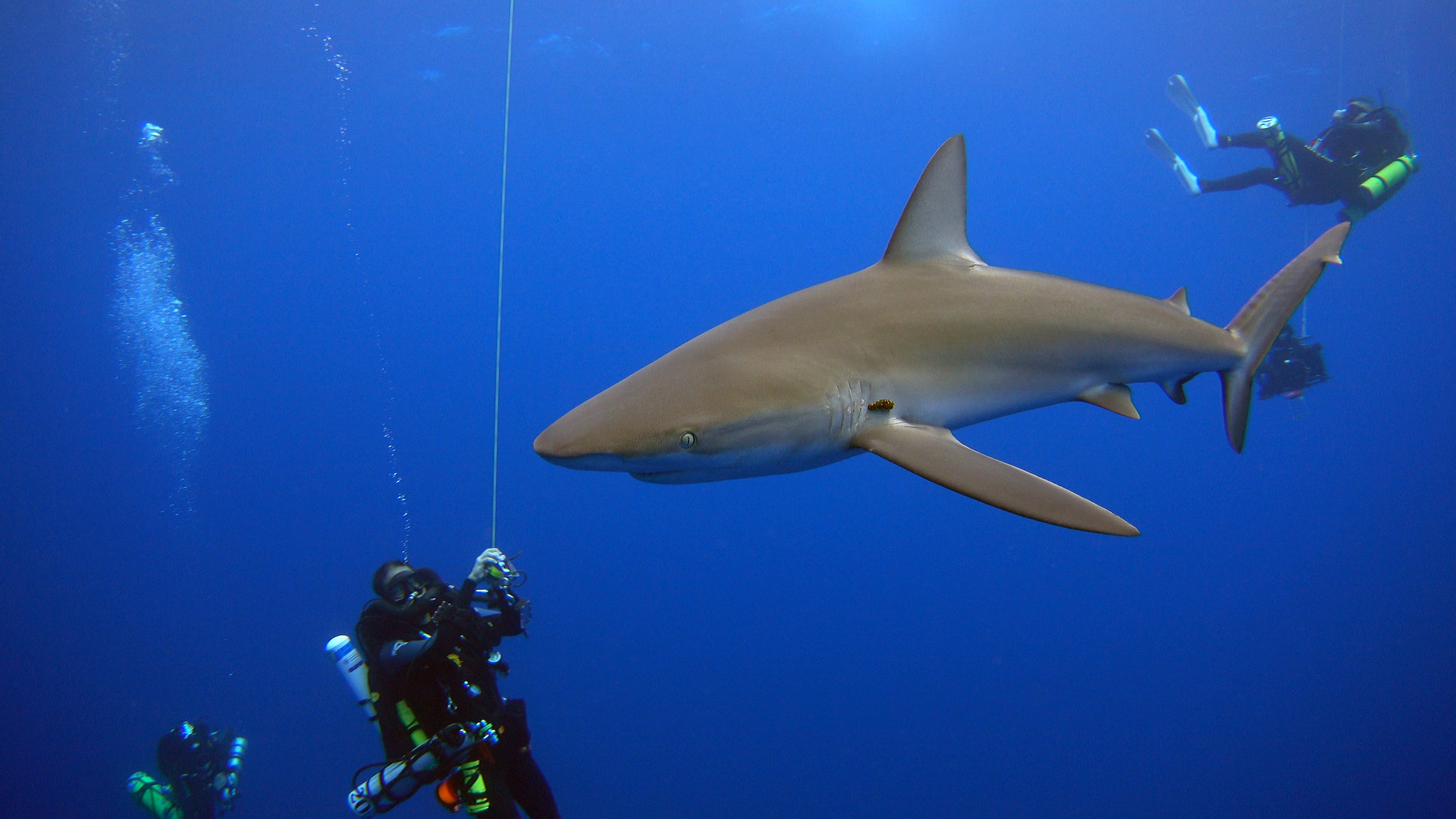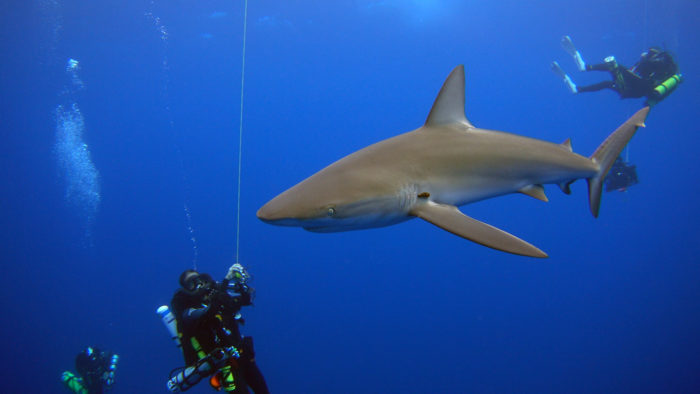
Shark Fun Facts

Photo Credit: NOAA and Richard Pyle/Bishop Museum 2015
Need to brush up on some shark facts for your next lightning round of ocean trivia? We’ve got you covered!
Anatomy – Sharks don’t have bones. They are a subspecies of fish known as elasmobranchs, which is a family including sharks, rays, and skates. These fish have a skeleton made of cartilage like our ears and noses, and not solid bone.
Dimorphism – In most species of shark, females are larger than males, a pattern in the animal kingdom known as sexual dimorphism (a size difference between genders). The exception is male snaggletooth sharks, which are about twice the size of females.
Family Tree – On record, we know of more than 440 species of shark that call the ocean home.
History – Sharks have been around for a long time — a really long time! Current research suggests sharks appeared in the ocean more than 400 million years ago.
Location – Sharks inhabit all the world’s oceans, and even some bodies of fresh and brackish water like rivers and bays. Scientists estimate about 40 species of shark can tolerate fresh or brackish water environments.
Reproduction – Shark species have different reproductive strategies depending on their habitat and life history. Egg-laying sharks are classified as oviparous while live-bearing sharks are classified as viviparous. The third reproductive strategy is a sort of hybrid of the others, called ovoviviparity, which means after fertilization, eggs develop and hatch in the womb, and a subsequent live birth.
Gestation – Depending on the species, a shark pregnancy can last anywhere from five months to two years. The spiny dogfish has the longest pregnancy of all sharks, and one of the longest for all animals.
Scales – Like other fish, sharks have scales. Unlike other fish, shark scales are more like teeth than skin and they are called placoid scales or dermal denticles (not to be confused with tentacles). These scales are oriented in the direction of the tail, which means the texture of sharks feels smooth in one direction but like sandpaper in the other.
Senses – Sharks have six senses. In addition to sight, smell, hearing, touch, and taste, sharks have the sense of electroreception, which allows them to detect the electrical currents of other organisms. This is especially useful for hunting.
Size – The smallest known species of shark is the dwarf lantern shark, a subspecies of dogfish clocking in at around six inches long; the largest is the whale shark, which can reach a maximum size of around 40 feet and weigh more than 20 tons.
Speed – The Greenland shark is the world’s slowest, swimming at a top speed of only 1.7 miles per hour, while the mako shark is the world’s fastest, reaching top speeds of more than 40 miles per hour.
Teeth – Unlike people, sharks can grow new teeth throughout their lifetime. Some sharks can lose and grow a total of more than 30,000 teeth in a lifetime!
